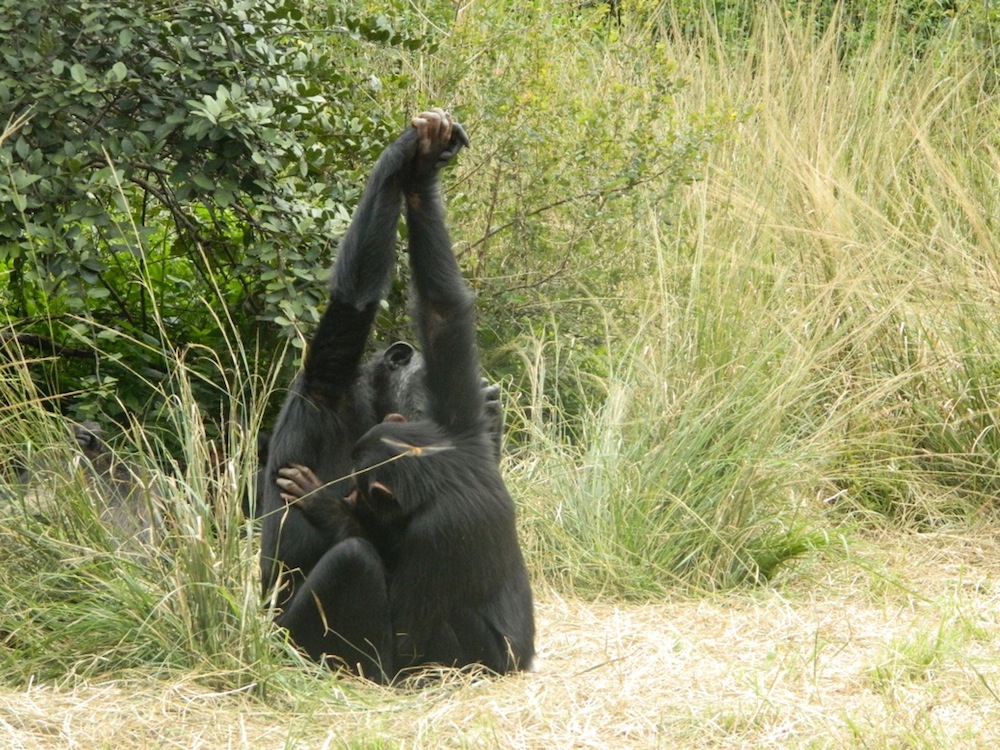When you purchase through links on our web site , we may earn an affiliate commission . Here ’s how it works .
When they are ready to snuggle up at the tops of trees , keen apes make themselves snug " nest " in which to rest for the night . New studies of these one - nighttime nest let out their incredible complexness .
" They are almost as complex as a man - made protection you might make , " subject research worker A. Roland Ennos of the University of Manchester , in the United Kingdom , tell LiveScience . " They do it how the Mrs. Henry Wood is going to relegate , and they have a feel for how strong they have to make it [ the nest ] . That shows theapes have intelligenceand have a flavour for the natural philosophy of their environment . "

A chimpanzee lounging in his nest.
These nest are about 4 to 5 feet long and about 3 foot broad ( 1.2 to 1.5 metre long , and slimly less that 1 metre wide ) . The apes make them in the forest canopy , which can be between 30 and 60 feet ( 10 and 20 MB ) up , and it direct them only about 10 mo to build up . They use the nests only once , and then move on . The nest keep them warm , away from dirt ball andkeep them dependable , up off the wood story .
nest for catnap
In the new study , publish today ( April 16 ) in the journal Proceedings of the National Academy of Sciences , the researchers analyse wise nest left bywild orangutansin Indonesia . They canvas the size , human body and composition of the nests , which are made in the crooks of large arm ; living branches about an column inch ( 3 centimeters ) astray , are dead set and interwoven to form the nest .

Orangutan nest viewed from above
" They are just bent . They can really outride living and by and by on you could go back to them and see they are like an archaeologic artifact of all these oddly bent item , " Ennos said . " It ’s very like to weaving a basket , they have to break the ramification , weave them together and mould a nice , secure , rigid bodily structure . " [ Sleep Soundly : Images of Primate Nests ]
They even use the smallest offset to line the nest , building a mattress and pillow of variety .
These complicated nest are a sort of shaft for the apes . " In society to build these nest they must have some variety of picture and feel for the world and the persuasiveness of branches and how they behave , " Ennos said . " People talk about humankind as the dick user and tool captain , but the nest of the Pongo pygmaeus is really acomplicated toolfor sleeping . "

A researcher taking over a chimpanzee nest.
chimpanzee nest
Other great apes make complex nest as well , include chimpanzee andbonobos . Another recent study , published March 28 in the American Journal of Physical Anthropology , analyzed the nest - edifice habits of West African chimpanzees .
The researchers saw the chimpsbuilt nestsvery similar to those of the orangutang , except sometimes the chimps chose to nest on the ground . To find out what make the chimpanzee to sleep on the ground versus style up in the tree , where it ’s seemingly good from marauder , the investigator gathered info about the domain where they found either primer coat or tree nests .

Chimpanzee nest - construction habits could leave clues to what drovehumans from the trees . Researchers have suggested that perhaps a deficiency of Sir Herbert Beerbohm Tree in different habitats could have caused man to nestle on the ground . The new subject did n’t find evidence that primer - nesting chimpanzees do so because of a want of trees . ( retiring inquiry published in 2011 in the American Journal of Physical Anthropology found thatchimp nests in treeswere better at keeping away insects and were also warm than sleeping on the ground . )
" This suggests that our unmediated ancestors were neither the only , nor the first , species to come down from the trees , " study research worker Katherlijne Koops , of the University of Cambridge , said in a statement . " This is intriguing as it has long been believe that come in down from the tree was a crucial evolutionary displacement . "

















